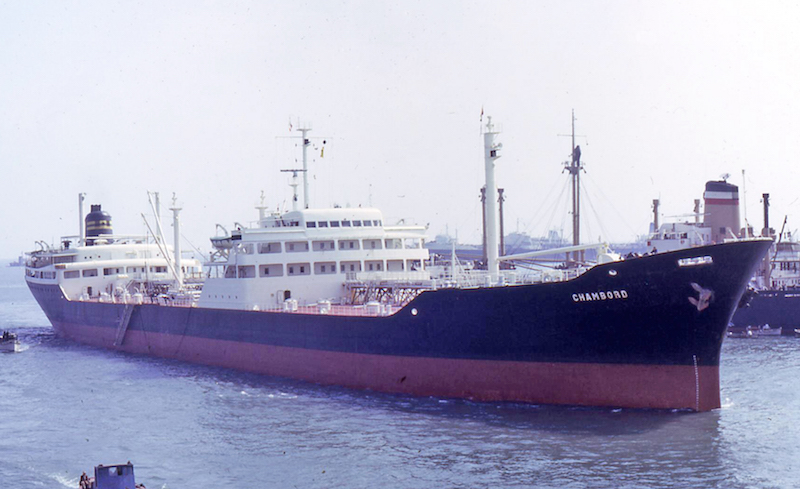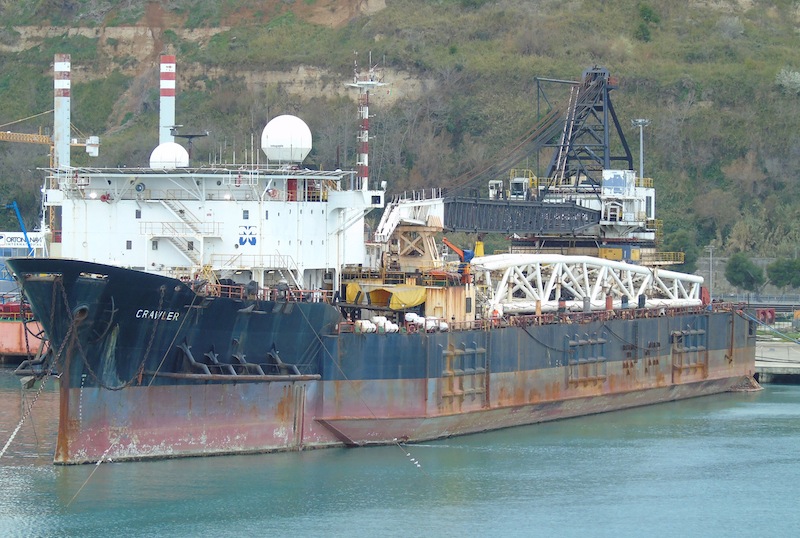The Chambord, oil tanker for Société Maritime des Pétroles BP was built in Dunkirk by Ateliers et Chantiers de France. On January 11, 1955, her launch ceremony under the French flag was presided over by Jacques Chaban-Delmas, Minister of Public Works, Transport, and Merchant Navy, in front of a crowd of notable spectators who arrived in two special trains and a fleet of coaches and cars. With her length of 203.39 m, width of 26.25 m, and 33,000 t of deadweight, she was a giant and the flagship of the French oil tanker fleet. Complete with individual, air-conditioned cabins for all, private bathrooms with showers for the officers, cool water dispensers in all of the corridors, refrigerators at all stations, and a saltwater pool, she was a symbol of rebirth and universal progress. Three sisterships left the shipyard in Dunkirk between 1955 and 1958, the Chenonceaux, Cheverny and Chaumont. The Chambord had made her maiden voyage between Marseille and Al Ahmadi (Kuwait) in May 1955. For 17 years, she supplied the French BP refineries.
On June 16, 1972, the Chambord arrived at the Brest ship repair yard. Damage to the thrust reducer is worse than expected. The repair is deemed to be too expensive in light of the vessel’s age. The company awaits the delivery of larger oil tankers. On July 1st, the Chambord left the repair drydock n°1 to be docked then anchored in the bay of Brest. In September of the same year, she is sold to a Panama-based company. Conversion into a drilling rig in the shipyards of La Spezia (Italy) is considered. On September 11, she left Brest, heading for Italy. In the end, she entered the Viktor Lenac shipyard in Rijeka (Croatia). The majestic Chambord is transformed into a factory-pontoon for oil research. She is shortened from 201 to 151 m in length, losing her rear section and her original IMO n° (5067821). Her castle is razed down to make way for a crane and various lifting equipment. At the front, the new living block accommodates 150 people (as opposed to 47 on the Chambord). The Chambord becomes the PM 25, a non-propelled crane-barge that will be used for 44 years in the Mediterranean, in the North Sea, and off West Africa before ending up, under the name Crawler, as scrap metal to be recycled in the Turkish yards in Aliaga.
 Imprimer cet article
Imprimer cet article











